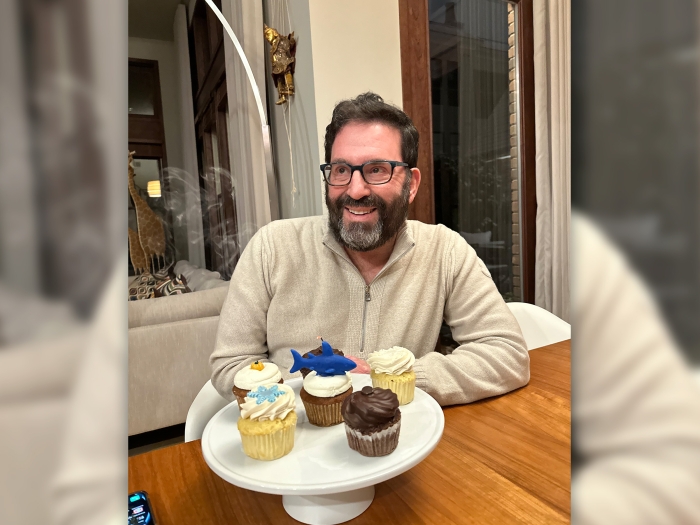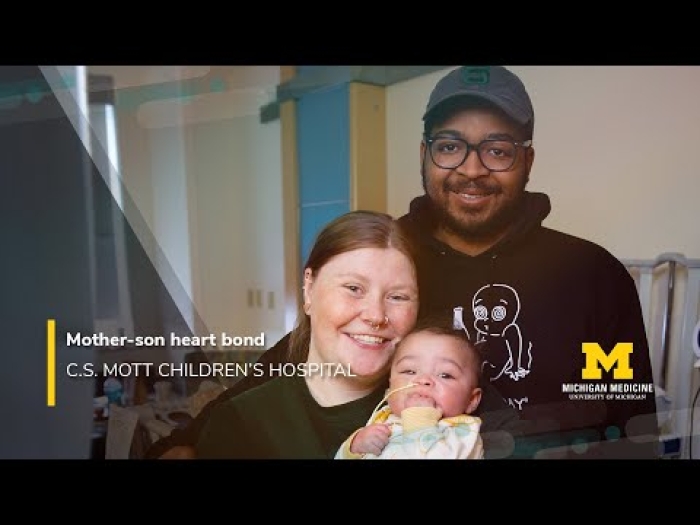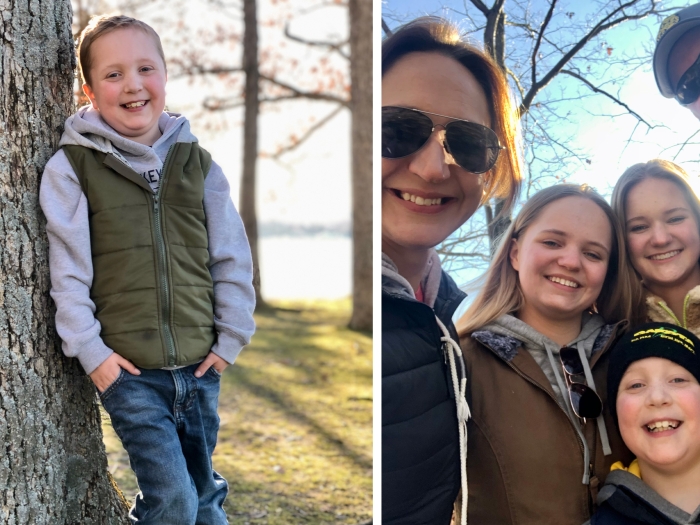Ken Groom thrives at U-M Frankel CVC after another health system gives him no hope for survival.
7:00 AM
Author |

At 70 years old, Ken Groom has the energy of a man half his age.
And there's plenty of gas left in the tank.
SEE ALSO: TAVR: What Patients Need to Know
The retiree and enthusiastic traveler has racked up 37,000 miles this year alone via road trips that have taken the Westland, Michigan, native to destinations in Louisiana, Utah and five other states.
It wasn't always this way.
Just two years ago, Groom felt hopeless when he asked to be transferred to the University of Michigan Frankel Cardiovascular Center for a second opinion about his life-threatening diagnosis: congestive heart failure.
Preceding the news were years of ailments that included a heart murmur, blocked arteries and atrial fibrillation — as well as internal bleeding, sleep apnea and blood transfusions.
Desperate for a better prognosis after his cardiac team declared there was nothing more they could do, Groom knew he wasn't ready to hit the brakes.
Fortunately, U-M experts were ready to help.
A lifetime of tuneups
Groom's heart issues started in 1982 with a diagnosis of pericarditis, inflammation of the pericardium — two thin layers of a saclike tissue that surrounds the heart, holds it in place and helps it work. A regimen of antibiotics plus yearly checkups kept him healthy.
Then, in 1997, he underwent triple bypass surgery for blocked arteries. Quadruple bypass surgery followed a decade later.
Seven years after that, Groom began retaining fluid and experiencing shortness of breath. Diagnosed with atrial fibrillation, he underwent a cardioversion, a procedure that converts an abnormally fast heart rate (tachycardia) or cardiac arrhythmia to a normal rhythm using electricity or drugs. The procedure successfully eliminated Groom's atrial fibrillation.
Soon, though, he began experiencing shortness of breath and fluid retention that compromised his mobility and quality of life.
Doctors determined that Groom had congestive heart failure associated with aortic valve disease.
Despite decades of bouncing back, his outlook, the patient recalls, was not good: "I was in and out of the hospital — 20 visits in 16 months."
Meanwhile, Groom's family was advised to seek hospice care.
Shifting gears
Taking proactive steps to change the course of his personal road map was a crucial detour. Groom noticed an immediate change after requesting a transfer to the Frankel CVC at U-M.
SEE ALSO: Living for Years Without a Heart Is Now Possible
"The attitude there was different," he says of his cardiologist, Sara Saberi, M.D., and the entire team. "They said: 'We can help you with this.'"
Although an echocardiogram indicated that Groom's heart seemed to be pumping efficiently, Saberi had doubts: "I suspected he was not actually getting enough blood out with each pump of the heart to deliver an adequate amount of blood to his kidneys. So, I did what we are taught to do in medicine: When things don't add up, start questioning."
Saberi reviewed the case with interventional cardiologist Stanley Chetcuti, M.D., and, using more specialized testing, confirmed their suspicion that Groom's aortic disease was much worse than originally thought.
Their conclusion: A minimally invasive transcatheter aortic valve replacement (TAVR) procedure could save his life.
Trusted navigators
U-M has completed more than 725 TAVR procedures, the most of any health system in the state, and is one of the nation's top programs in terms of volume.
Patients who undergo a TAVR procedure — in which the aortic valve is replaced via a catheter — experience less downtime, faster recovery and, often, a shorter hospital stay (three to five days on average) than patients undergoing open-heart surgery.
Groom's case was no different.
"He responded incredibly well," Saberi says of the procedure, which was performed in June 2015 by Chetcuti as well as Daniel Menees, M.D., G. Michael Deeb, M.D., and Bryant Wu, M.D.
Following the Friday procedure, Groom was back home the very next Tuesday.
Even upon waking, "I knew right away I was better," Groom says. "My first words were: 'Hail to the victors.'"

The open road awaits
Thanks to his TAVR, Groom has shifted from a man who struggled to find the energy to tie his shoes to a social guy on the go. He has regained the drive to attend baseball games, visit his grandchildren and, of course, travel the country.
Groom's daughter, Kara, and the rest of the family are grateful for their patriarch's significantly improved health.
"The doctors at U-M knew my dad might not survive the procedure due to his compromised health," Kara says, "but he definitely would not have lived without it.
"He has another chance at life because of the expertise and hard work of U-M, and he is making the most of it."
Many more miles can be logged by his figurative odometer.
Groom, whose next road trip will be to Tennessee to visit his granddaughter, sums it up this way: "They gave me my life back."

Explore a variety of health care news & stories by visiting the Health Lab home page for more articles.

Department of Communication at Michigan Medicine
Want top health & research news weekly? Sign up for Health Lab’s newsletters today!





